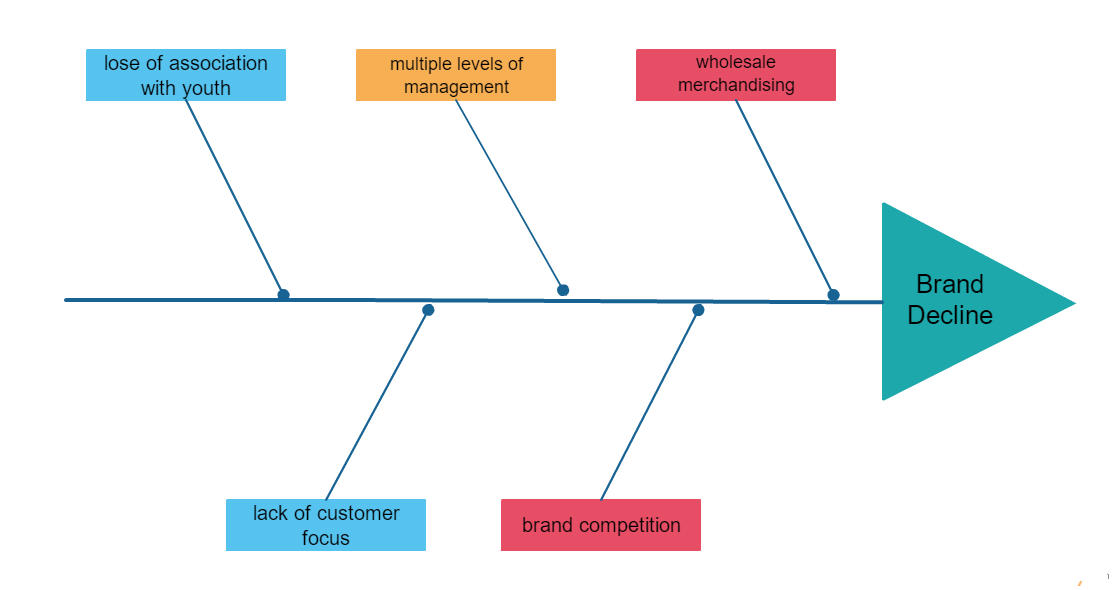The aim of this paper is to review a case of the company that produces Levi’s products and define the causes of the problem it faces. In order to provide a detailed examination of the issue, Fishbone and Duncker diagrams will be used. The paper will also explore the steps that the company has to take in order to reach the desired outcome.
After careful examination of the company’s case, it is clear that Levi’s is facing the issue of brand decline. The following causes have contributed to the problem: multiple levels of management, wholesale merchandising, lack of customer focus, brand competition, and lack of association with youth. It could be argued that the company has not put enough emphasis on reaching its main objective of staying competitive and meeting customer requirements. Appendix A illustrates the causes of Levi’s problem.
If Levi’s wants to regain competitiveness and stop the process of brand decline, it has to consider the option of repositioning its brand (Calkins 158). To this end, it is necessary to change the perception of the brand. The company must review different social media in order to have a better understanding of “what people really think about a brand” (Drummond-Dunn par. 8). This understanding will help to create a better advertising campaign. Moreover, the management has to examine current market dynamics and to adjust the following four Ps accordingly: product, place, price, and promotion. Furthermore, in order to change customers’ perception of the brand, it is necessary to consider entering a new distribution channel (Calkins 158). However, management should take into account that it is a slow process that can discourage existing customers from buying the company’s products (Aaker 76).
It can be argued that a centralized company structure has slowed down the decision-making process, thereby exacerbating the process of brand decline. In order to solve this problem, it is necessary to employ delegation as the main form of decentralization within the Levi’s company. To this end, it is necessary to provide local management with more authority as well as to increase the pace of the decision-making process (Kokemuller par. 12). Appendix B illustrates the steps Levi’s has to take in order to solve its problem.
Works Cited
Aaker, David. Three Threats to Brand Relevance. Wiley, 2013.
Calkins, Tomas. Breakthrough marketing plans. Palgrave Macmillan, 2011.
Drummond-Dunn, Denyse. “How to Stop Brand Decline.” C3 Centricity. Web.
Kokemuller, Neil. “Decentralized Company Business Structure.”Chron. Web.
Appendix A: Causes of Levi’s Problem

Appendix B: Steps for Solving Levi’s Problem
